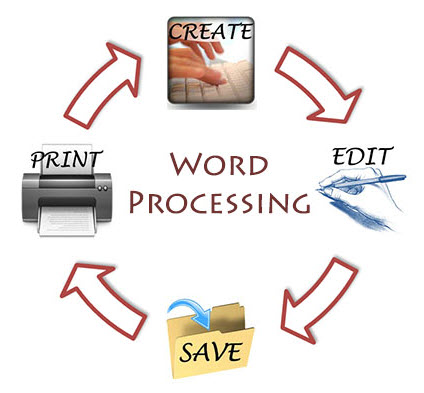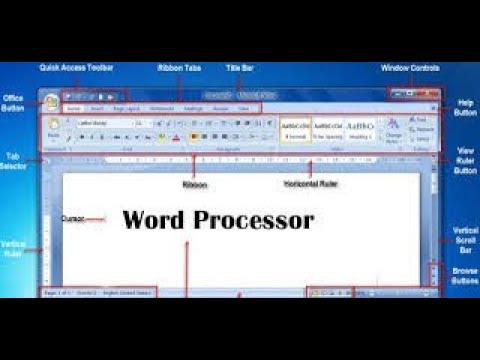In the world of computing, software is broadly categorized into two types: system software and application software.
A word processor is not system software; it’s application software. It enables creating, editing, and storing text documents, relying on system software like operating systems to function, unlike system software that manages hardware.
This article aims to clarify why this assumption is incorrect, explore the distinctions between system software and application software, and explain the role of word processors in the computing ecosystem.
Understanding System Software
System software is the backbone of any computing device, acting as an intermediary between the hardware and the user. It provides a platform for other software to run and ensures that the computer’s resources, such as memory, processor, and storage, are utilized effectively. Common examples of system software include:
- Operating Systems (OS): Windows, macOS, Linux, and others manage hardware resources and provide a user interface.
- Device Drivers: These enable communication between the operating system and hardware components like printers or graphics cards.
- Utility Programs: Tools like antivirus software, disk defragmenters, and system optimizers maintain system performance.
- Firmware: Embedded software that controls specific hardware functions, such as a BIOS in a computer.
System software operates at a low level, often running in the background without direct user interaction. Its primary role is to ensure the computer’s stability and functionality, making it possible for other software to perform their tasks.
What is a Word Processor?

A word processor is a software application designed to help users create, edit, format, and print text-based documents. Popular word processors include Microsoft Word, Google Docs, Apple Pages, and open-source options like LibreOffice Writer. These tools offer features such as:
- Text formatting (fonts, sizes, colors, and styles)
- Spell-checking and grammar correction
- Document templates for resumes, letters, and reports
- Collaboration tools for real-time editing
- Integration with cloud storage for accessibility
Word processors are user-facing applications, meaning they are designed for direct interaction with individuals performing tasks like writing essays, drafting business reports, or creating personal letters. Their functionality is focused on enhancing productivity and creativity rather than managing computer hardware.
Why a Word Processor is Not System Software
The assertion that a word processor is an example of system software likely stems from a misunderstanding of software categories. To clarify, let’s examine the key differences between system software and application software, particularly in the context of word processors.
1. Purpose and Functionality
System software is designed to manage and control the computer’s hardware and provide a platform for other software. For example, an operating system like Windows allocates memory and processing power to applications. In contrast, a word processor’s primary purpose is to facilitate document creation and editing. It does not interact directly with hardware components like the CPU or memory but relies on the operating system to access these resources.
2. User Interaction
System software typically operates in the background, with minimal direct user interaction. For instance, a device driver for a printer works silently to ensure the printer communicates with the computer. On the other hand, word processors are highly interactive, requiring users to input text, select formatting options, and save files. This user-centric design aligns with application software, not system software.
3. Dependency on System Software
Word processors depend on system software to function. For example, Microsoft Word requires an operating system like Windows or macOS to run. The operating system provides the necessary environment, including file management and hardware access, for the word processor to operate. System software, however, does not rely on application software, as its role is foundational.
4. Scope of Operation
System software has a broad scope, affecting the entire computer system. An operating system, for instance, manages all running applications and hardware components. A word processor, however, has a narrow scope, focusing solely on text-related tasks. It does not influence other applications or manage system-wide resources, further distinguishing it as application software.
Word Processors as Application Software
Word processors fall squarely under the category of application software, which is designed to help users perform specific tasks. Application software can be further divided into subtypes, such as:
- Productivity Software: Includes word processors, spreadsheets (e.g., Microsoft Excel), and presentation tools (e.g., PowerPoint).
- Creative Software: Tools like Adobe Photoshop for graphic design or video editing software.
- Communication Software: Applications like email clients or messaging apps.
As productivity software, word processors enhance efficiency by providing tools for document creation and management. They are tailored to meet the needs of students, professionals, and casual users, making them a staple in both personal and professional settings.
Common Misconceptions and Their Origins
The confusion about word processors being system software may arise from several factors:
- Essential Nature of Word Processors: In many workplaces and schools, word processors are pre-installed on computers, leading some to assume they are part of the system’s core software. However, pre-installation does not equate to system software status; it simply reflects their widespread utility.
- Integration with Operating Systems: Some word processors, like Microsoft Word, are deeply integrated with operating systems (e.g., Windows) through features like file explorers or cloud syncing. This integration can create the impression that they are part of the system software, but they remain distinct applications.
- Historical Context: In the early days of computing, word processing was sometimes handled by specialized systems or firmware in dedicated machines (e.g., typewriter-like word processors). This historical overlap may contribute to the misconception, though modern word processors are clearly application software.
The Role of Word Processors in Modern Computing

In the USA, word processors are ubiquitous, used by students, educators, businesses, and government organizations. According to a 2023 survey by Statista, over 80% of American office workers reported using Microsoft Word regularly, highlighting its dominance in the productivity software market. Word processors have evolved beyond basic text editing, incorporating advanced features like:
- Cloud Collaboration: Tools like Google Docs allow multiple users to edit documents simultaneously, revolutionizing teamwork.
- Artificial Intelligence: Modern word processors, such as Microsoft Word, integrate AI-driven features like grammar suggestions and predictive text.
- Cross-Platform Accessibility: Word processors are available on desktops, tablets, and smartphones, ensuring flexibility for users.
These advancements underscore the role of word processors as application software, designed to meet user needs rather than manage system resources.
Clarifying Software Categories for Beginners
For those new to computing, understanding software categories can be daunting. Here’s a simple analogy: think of system software as the engine and transmission of a car, working behind the scenes to keep it running. Application software, like a word processor, is akin to the car’s dashboard or entertainment system, providing tools for the driver to accomplish specific tasks. This distinction helps demystify the roles of different software types and reinforces that word processors are tools for users, not system managers.
FAQs
What is an example of a word processor?
Microsoft Word is a popular word processor. It helps users create, edit, and format text documents like letters, resumes, or reports easily.
What is an example of a system software?
Windows is an example of system software. It manages computer hardware, runs applications, and ensures the system operates smoothly in the background.
Is word processing an application or system?
Word processing is application software, not system software. It’s designed for creating and editing documents, relying on system software to function properly.
Is a processor an example of software?
No, a processor is not software; it’s hardware. It’s the computer’s brain, processing instructions, while software includes programs like word processors.
Is a word processor an example of utility software?
No, a word processor is not utility software. It’s application software for creating documents, unlike utility software, which maintains system performance, like antivirus programs.
What is considered a word processor?
A word processor is software for creating, editing, and formatting text documents. Examples include Microsoft Word, Google Docs, and LibreOffice Writer.
What are the 3 types of word processors?
Three types of word processors are standalone (Microsoft Word), cloud-based (Google Docs), and open-source (LibreOffice Writer), each offering unique document creation features.
Is Google Docs a word processor?
Yes, Google Docs is a word processor. It’s a cloud-based application for creating, editing, and collaborating on text documents in real time.
Conclusion
In conclusion, a word processor is not an example of system software but rather a prime example of application software. System software, such as operating systems and device drivers, manages hardware and provides a foundation for other programs, while word processors enable users to create and edit documents. The misconception that word processors are system software likely stems from their widespread use and integration with operating systems, but their user-focused design and dependency on system software clearly place them in the application software category. By understanding these distinctions, users can better appreciate the roles of various software types in their computing experience. Whether you’re drafting a resume, writing a novel, or preparing a business proposal, word processors remain indispensable tools for productivity, firmly rooted in the realm of application software.











